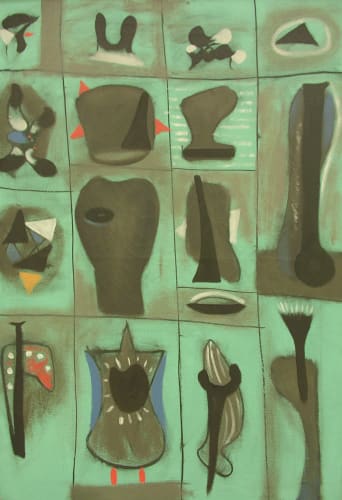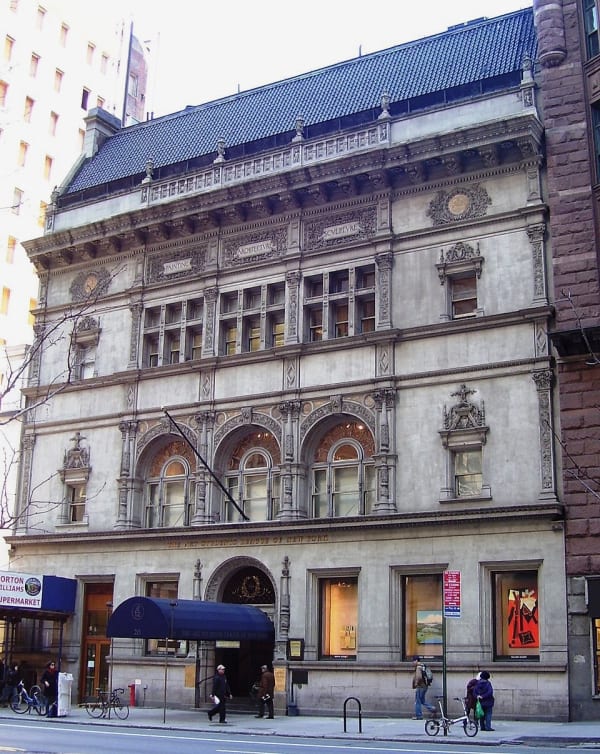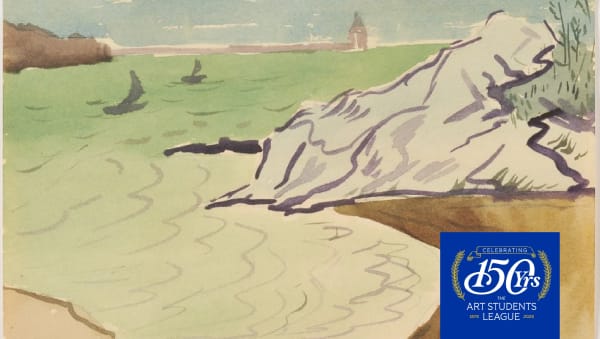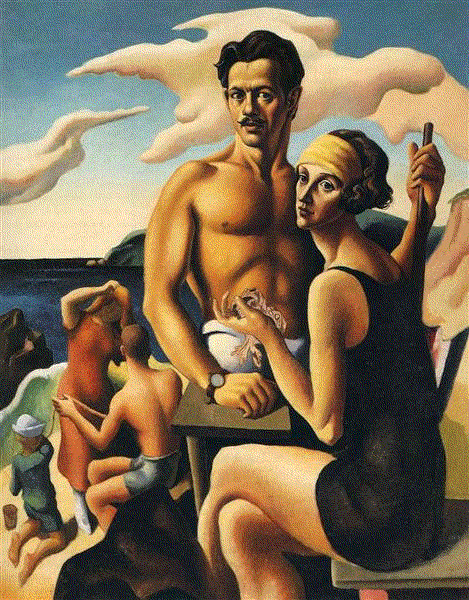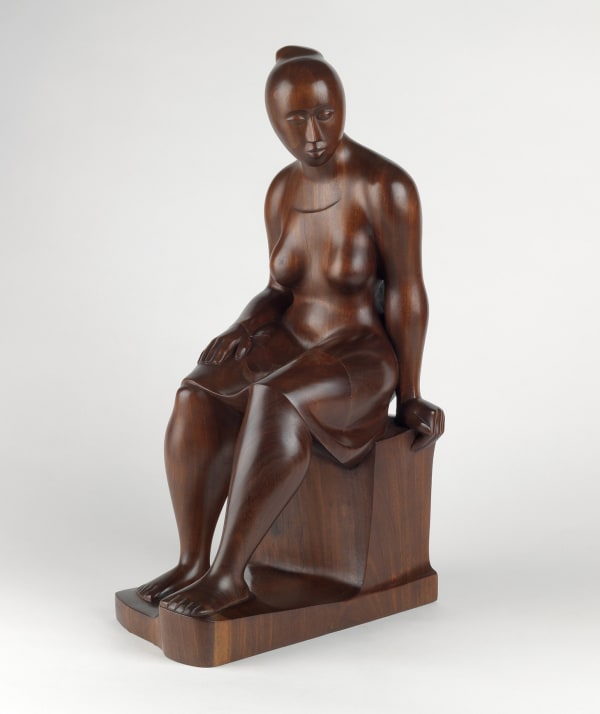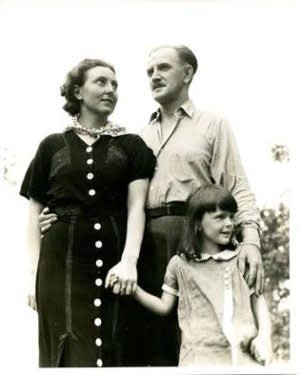Adolph Gottlieb
Different times require different images. Today when our aspirations have been reduced to a desperate attempt to escape from evil, and times are out of joint, our obsessive, subterranean and pictographic images are the expression of the neurosis which is out reality. To my mind certain so-called abstraction is not abstraction at all. On the contrary, it is the realism of our time.
– Adolph Gottlieb
Adolph Gottlieb was an American Abstract Expressionist painter. His wanted his works to express the feelings that humans encounter during the course of both stressful and serene times.
Gottlieb was born in New York in 1903. The family lived across from Tompkins Square Park. His father owned a stationery store, his mother was a homemaker, who looked after Gottlieb and his two younger sisters.
His interest in art, and disinterest in school, resulted in his leaving high school in 1920, to work in his father’s business during the day and take classes at the Art Students League in the evenings. His teachers at the Art Students League included Ashcan School founders John Sloan and Robert Henri.
In 1921 the family moved to the Bronx. Gottlieb, who was 17, wanted to study art in Europe. He and a high school friend worked on a merchant ship and earned their passage to Europe. Gottlieb lived in Paris for six months. He attended sketch classes at Academie de la Grande Chaumiere and visited the Louvre Museum every day. He then spent a year in Europe, traveling to Berlin, Munich, Dresden, Vienna, and Prague, visiting galleries and museums before returning to New York in 1923.
He finished high school while working with his father and attended classes at the Parsons School of Design, the Art Students League, Cooper Union and the Education Alliance Art School.
He began show his works at the Opportunity Gallery on 56th Street, where he met Milton Avery and Mark Rothko. In 1929, he won first prize in the Dudensing National Competition, which led to his first solo show at the Dudensing Gallery. He shared a studio on East Broadway with artist Barnett Newman.
In 1932, Gottlieb married Esther Dick, a teacher from Connecticut, whom he had met at a party in The Village. By 1935, Gottlieb, Mark Rothko and other Abstract Expressionist artists founded “The Ten,” a group of artists who exhibited their works together.
Gottlieb’s style began to change during the years leading up to, and during, World War ll. He began to use universal symbols that he hoped would offer comfort at a time of chaos in the world. His work was well-received and, in 1945, the Guggenheim bought eleven of his paintings, then his work was acquired by MoMa the following year.
His work was so admired that, in 1968, a major retrospective was jointly organized by the Whitney and the Guggenheim, and exhibited in both museums simultaneously. In 1971, Gottlieb suffered a stroke that confined him to a wheelchair. His left side was paralyzed but he continued to paint. The same year he was elected to the National Institute of Arts and Letters.
Adolph Gottlieb died on March 4, 1974. He was honored with a memorial exhibit at MoMA on March 20th. Throughout his career Adolph Gottlieb had 56 solo exhibitions and was included in over 200 group exhibitions. His works are in the collections of more than 140 major museums around the world. The Esther and Adolph Gottlieb Foundation was set up, according to the artist’s wishes, to provide financial assistance to individual artists.
References:
Lee Dembart. Adolph Gottlieb, Abstractionist, Dies. The New York Times. March 5, 1974.
Phyllis Tuchman. Oral history interview with Esther Dick Gottlieb, Smithsonian Archives of American Art. October 22, 1981.
Send me more information on Adolph Gottlieb
-

The Art Students League Celebrates 150th Anniversary
A Special Tribute to Robert Rauschenberg at the Art Students League Gala September 18, 2025The Art Students League is celebrating its 150th anniversary this year. Since 1875 great artists have walked through the doors of 215 West 57th Street...Read more -

The Art Students League Celebrates 150 Years
Showcased works by Milton Avery, Adolph Gottlieb and other Art Students League Alumni June 20, 2025The Art Students League of New York is celebrating its 150th anniversary with an exhibition of works by many of its most talented artists. The...Read more -

Avery, Gottlieb, Rothko: A Close-Knit Trio at the Phillips Center
April 3, 2025Avery's last works were as fresh as though he were a young painter and of course, they also had the authority of an old master....Read more -

Thomas Hart Benton and Loie Hollowell at the Hirshhorn
November 14, 2024I have a sort of inner conviction that for all the possible limitations of my mind and the disturbing effects of my processes, for all...Read more -

Milton Avery and the Federation of Modern Painters and Sculptors
August 14, 2024“ I like to seize the one sharp instant in Nature, to imprison it by means of ordered shapes and space relationships. To this end...Read more -

Surovek Gallery at Art Miami 2023
November 30, 2023At Surovek Gallery our focus is on the finest American paintings, drawings, watercolors and prints of the 19th, 20th and 21st centuries; the oeuvre which...Read more -

Milton Avery and Wolf Kahn: Summer Scenes at Surovek Gallery
June 29, 2023One must maintain a little bit of summer, even in the middle of winter. – Henry David Thoreau Summer brings us long, sunny days, warm...Read more -

Milton Avery and Elizabeth Catlett at Surovek Gallery
August 18, 2021Milton Avery 1885-1965 London's Royal Academy of Arts is holding the first comprehensive exhibit of Milton's Avery's work in Europe. Milton Avery was an artist's...Read more -

Milton Avery: Summer with the Averys
May 9, 2019I try to construct a picture in which shapes, spaces, colors, form a set of unique relationships, independent of any subject matter. At the same...Read more

